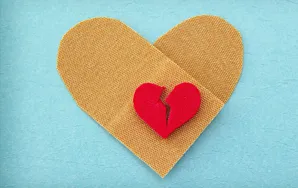Have you ever found yourself dancing to a heartbreak song, screaming its lyrics in the car, or adding it to your gym playlist right after a breakup? If so, you’re not alone. This phenomenon, popularly dubbed “sad bops,” combines emotionally heavy lyrics with upbeat or catchy music. It’s a strange contradiction—why are we dancing to pain?
Let’s dive into the psychology, cultural context, and emotional science behind sad bops and why they resonate so deeply, especially in the age of Gen Z and digital music.
What is a Sad Bop?
A sad bop is a song that:
-
Has emotionally painful or introspective lyrics (often about heartbreak, betrayal, loss)
-
Is set to a catchy, danceable beat or features upbeat production
-
Makes you feel emotionally seen while still vibing to the beat
Famous examples include:
-
“Dancing On My Own” – Robyn
-
“We Are Never Ever Getting Back Together” – Taylor Swift
-
“Stay” – Rihanna ft. Mikky Ekko
-
“abcdefu” – GAYLE
-
“Someone Like You” (Remix versions) – Adele
The result? A paradox: you cry, you groove, and somehow, you heal.
The Brain Science Behind It
1. Dopamine Meets Cortisol
Music stimulates the brain’s reward system by releasing dopamine. At the same time, sad lyrics activate emotional centers like the amygdala, linked to pain and empathy. The result is a chemical blend of:
-
Sadness (reflective, empathetic)
-
Euphoria (from the beat or melody)
This combination creates a kind of emotional release that is therapeutic.
2. Cognitive Dissonance at Work
Your brain holds two conflicting truths:
-
“I’m hurting emotionally.”
-
“This beat is lit.”
This is called cognitive dissonance, and humans actually enjoy resolving that dissonance. We dance because it helps reframe emotional pain into something empowering or manageable.
Emotional Validation Through Music
Sad bops offer a unique form of emotional validation. When a song describes a breakup or emotional spiral exactly how you’re experiencing it, you feel:
-
Seen
-
Heard
-
Understood
This “musical empathy” becomes a coping mechanism, and the upbeat rhythm acts like a bandage for the soul, allowing you to feel sad without spiraling.
It’s no surprise then that breakup songs are among the most streamed songs globally—because they give language to feelings we can’t always express ourselves.
Catharsis Through Movement
Why do we dance to songs about pain?
Because movement = release.
Dancing to a sad bop:
-
Physically releases pent-up energy
-
Engages the body, not just the mind
-
Creates a ritual of healing (think: dancing alone in your room at midnight)
Even just swaying to the rhythm while thinking about your ex is a form of embodied catharsis.
The Rise of Sad Bops in Pop Culture
In the past decade, streaming and social media have accelerated the rise of sad bops. Platforms like TikTok and Instagram Reels are filled with clips of people:
-
Crying in their car while singing
-
Dancing in the mirror with a mascara-stained face
-
Making breakup memes set to sad bops
Why does this matter?
Because music is now not just heard—it’s shared, performed, and even memed. The relatability of sad bops makes them perfect for viral content and emotional storytelling.
Artists Who Mastered the Sad Bop Formula
Certain artists have perfected the “sad lyrics, happy sound” blend. Here’s a quick list of sad bop kings and queens:
1. Taylor Swift
From “All Too Well” to “Cruel Summer,” she’s mastered the art of heartbreak to melody.
2. Olivia Rodrigo
Her Gen-Z sadness, raw vocals, and punk-pop beats make for perfect rage-cry sessions.
3. The Weeknd
His lyrics often tell dark tales of love and addiction over irresistible dance beats.
4. Billie Eilish
While more subdued, her music often masks deep emotion behind soft, rhythmic melodies.
5. Dua Lipa
“Don’t Start Now” and “New Rules” serve as post-breakup empowerment anthems that make you dance, not cry.
Cultural Shifts That Make Sad Bops Popular
We live in a world where emotional complexity is finally being normalized:
-
Mental health awareness is increasing
-
Vulnerability is no longer taboo
-
Sadness isn’t hidden — it’s aesthetic




